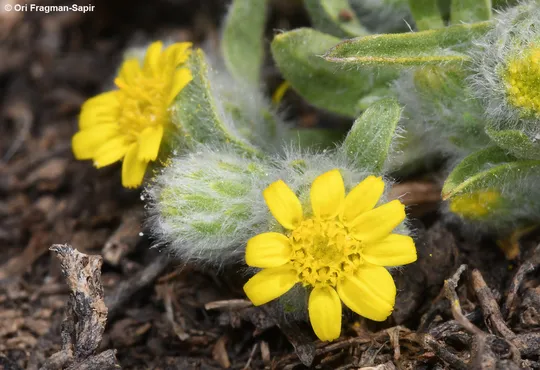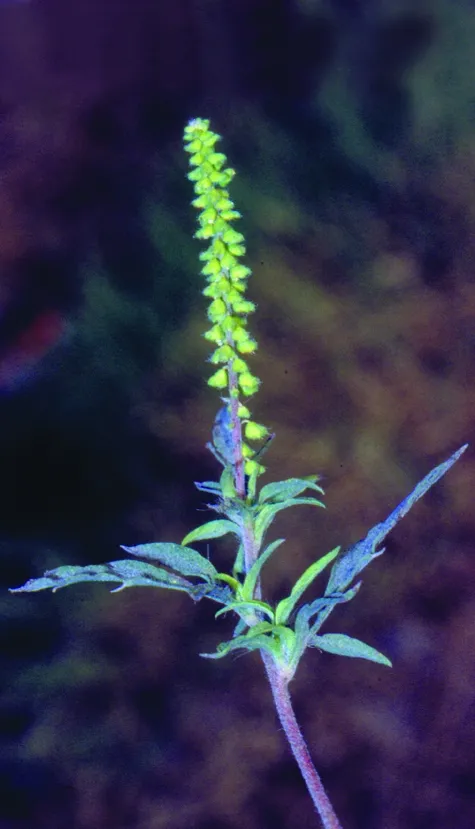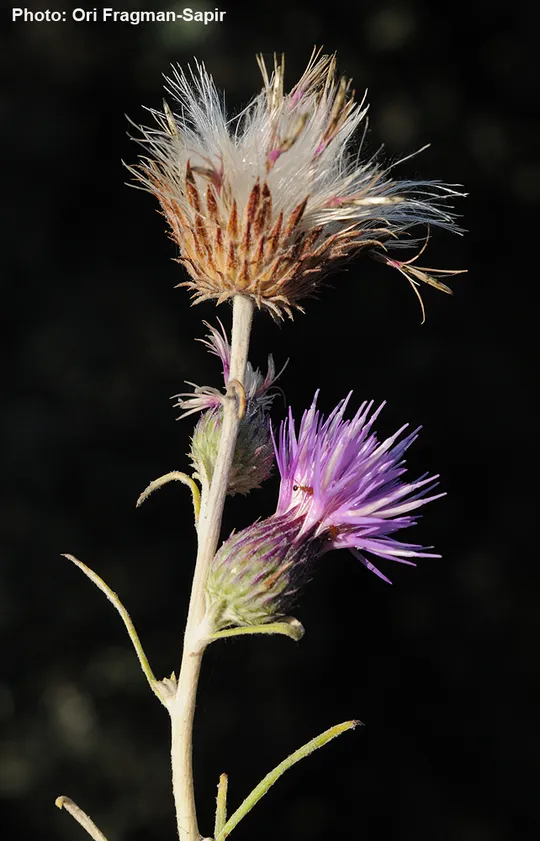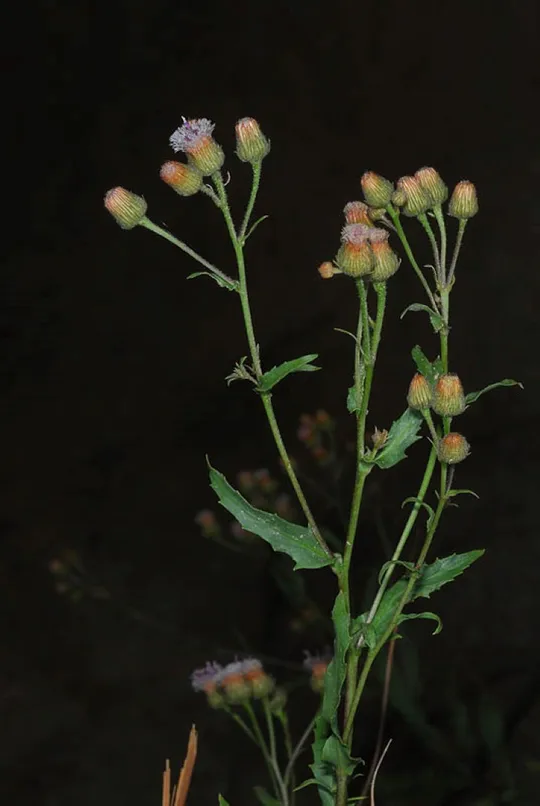Pulicaria inuloides
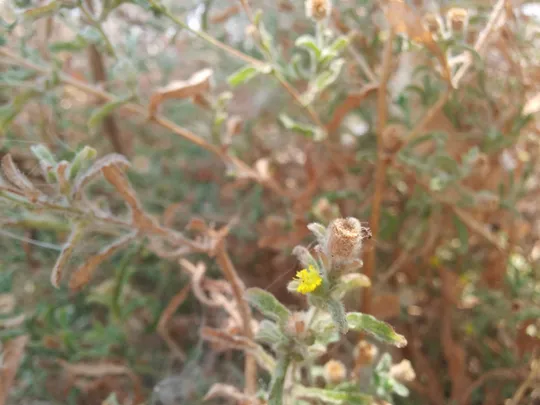
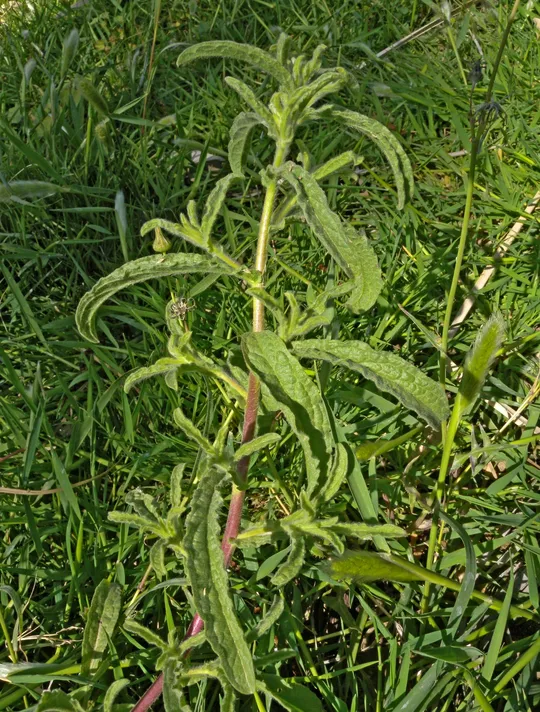
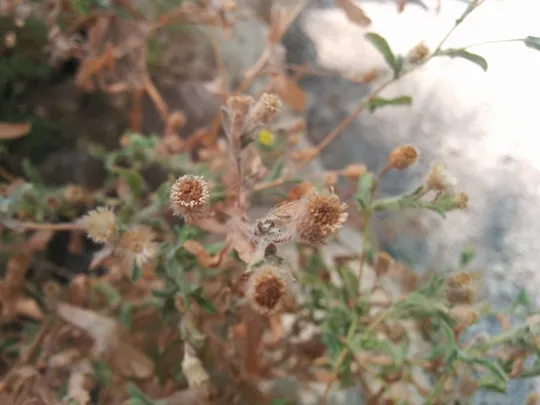
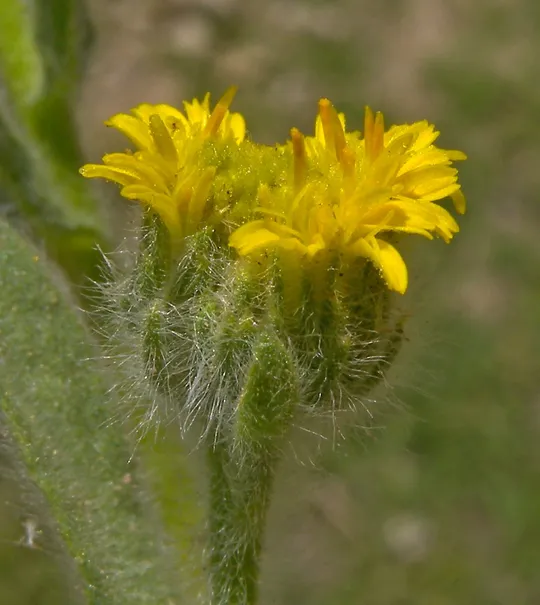
The
genus name, Pulicaria, indicates the use of one of the species as
a flea repellent and indeed many of the genus species have a repelling odor, although
some people find it pleasant and refreshing. The leaves can be collected, dried
in a paper bag or cloth, and used as a disinfectant and insect repellent.
Pulicaria inuloides grows in the
Dead Sea region on only two adjacent sites in the En Gedi area: in the date
palm grove near the ancient synagogue (M. Blecher – pers. comm. ) and near the En Gedi spring. Ruhama Berliner
collected the species in Israel for the first time in En Gedi in 1974 and Naomi
Feinbrun first identified it in 1983. Danin (2004) recorded it the Golan
Heights, but there is no documentation in the herbarium.
Springs, streams in hot deserts; date palm groves and
disturbed, intensively grazed moist depressions at the edge of wetlands. Plants
growing far from water have a small "stress" form and their leaves
are hairier and smaller.
Pulicaria
inuloides is close to P.
arabica. In Maire's study
in North Africa he gave it the status of a subspecies of P.
Arabica, P. a. inuloides (L.) Cass. (DC.) Maire. Bolos, in
the new Flora of Egypt, mentions both species from Sinai. He distinguishes
between them by the elongated hairy leaf, with a tuberculate base in P. inuloides. This distinction, accepted by
other researchers as well, is problematic because: (a) plants with transition
features in the leaf shape have been found in En Gedi, in the Edom Canyons and
in Southern Sinai; (b) leaf shape is known as a very variable quality in plants
in general and particularly in Pulicaria, and the adequacy of using this trait as a justification
for separating two species should be examined.
P.
arabica
and P.
inuloides belong to the group of annuals in the genus to which P. vulgaris, a widely distributed noxious weed in
Mediterranean Eurasia that has even invaded America, also belongs. In Israel, there
is a “dwarf” variety of P. vulgaris which was described from Hauran as an endemic
and independent species P. auranitica Mouterde. This species also grows
on the Golan Heights peaks and in the Hermon dolines, where it is not
considered a weed. P.
arabica
and P.
inuloides can be considered close vicarious species to P. vulgaris
that replace it elsewhere.
Other Pulicaria species
in Israel are P. undulata
(a branched annual species, with a small head – 10 mm) that grows on edge of puddles or moist
wadis in the desert, and P. dysenterica that grows on
stream banks and wetland margins mainly in the Mediterranean region
·
Pulicaria inuloides grows in only
two sites in Israel.
·
The number of plants in each
population is small.
·
The desiccation of water flows in En
Gedi and cessation of irrigation could destroy the plants that are not close to
natural water sources.
·
P. inuloides is protected in the En
Gedi Nature Reserve.
·
It is particularly common in North
Africa and not globally endangered.
A detailed
taxonomic study on the relationship between Pulicaria inuloides and P. arabica should be conducted in Southern Sinai, Edom and in the
Dead Sea area. The En Gedi population should be monitored and a suitable water
regime maintained on the site.
Pulicaria inuloides is widely
distributed from the Mediterranean Basin to Afghanistan. In the Mediterranean Basin
its distribution is disjunct: it is very common in the North African countries,
and is also found in the Eastern Mediterranean countries (Cyprus, Lebanon,
Israel, Jordan, Iraq, Saudi Arabia and the Sinai Peninsula), where it is
uncommon and even rare. Recently it was found at five sites along Turkey's
Mediterranean coast. In Africa, it grows in Niger, Chad, Ethiopia and Eritrea.
In the High Sinai Mountains, there are apparently intermediate forms between P. arabica and P. inuloides. The distinction between the two
species is difficult, which raises doubts regarding the accuracy of its
identification from Jordan, Cyprus, Lebanon and Turkey. Nevertheless, it probably
grows in Arabia and in the Horn of Africa, and in our region it has a Sudanian connection.
Danin (2004) notes P. inuloides from Edom in Jordan), based on the herbarium sheet collected from the
Wadi Musa canyon west of Petra. P. arabica also grows in the area and there are intermediate
forms between the species.
Pulicaria
inuloides
is an extremely rare perennial herbaceous plant that grows near water in En
Gedi. Its habitat is vulnerable to desiccation. Its taxonomic status and
relations with P.
arabica require
clarification, which will reflect on the status of the plant in Edom. It is not
globally endangered.
Zareh M. M. 2005, Systematic and anatomical studies of Inuleae and Plucheae in Egypt. Feddes Repertum 116, 1-2, 43-53
Current Occupancy Map
| 1000 squre meter pixel | 5000 squre meter pixel | 10000 squre meter pixel | |
|---|---|---|---|
| number of observations | 0 | 0 | 0 |
| in total pixels | 0 | 0 | 0 |
| Family | Asteraceae |
| Classification | On the endangered species list |
| Ecosystem | Desert Oasis |
| Chorotype | Saharo-ArabSaharo – Arab (Mediterranean) |
| Conservation Site | The Dates Orchard near the ancient synagogue of En Gedi |
| Rarity |
1
5
6
|
|---|---|
| Vulnerability |
0
2
4
|
| Attractiveness |
0
0
4
|
| Endemism |
0
0
4
|
| Red number |
1
3.7
10
|
| Peripherality | 0 |
| IUCN category | DD EW EX LC CR EN VU NT |
| Threat Definition according to the red book | Vulnerable |
 Based on:
Based on:
